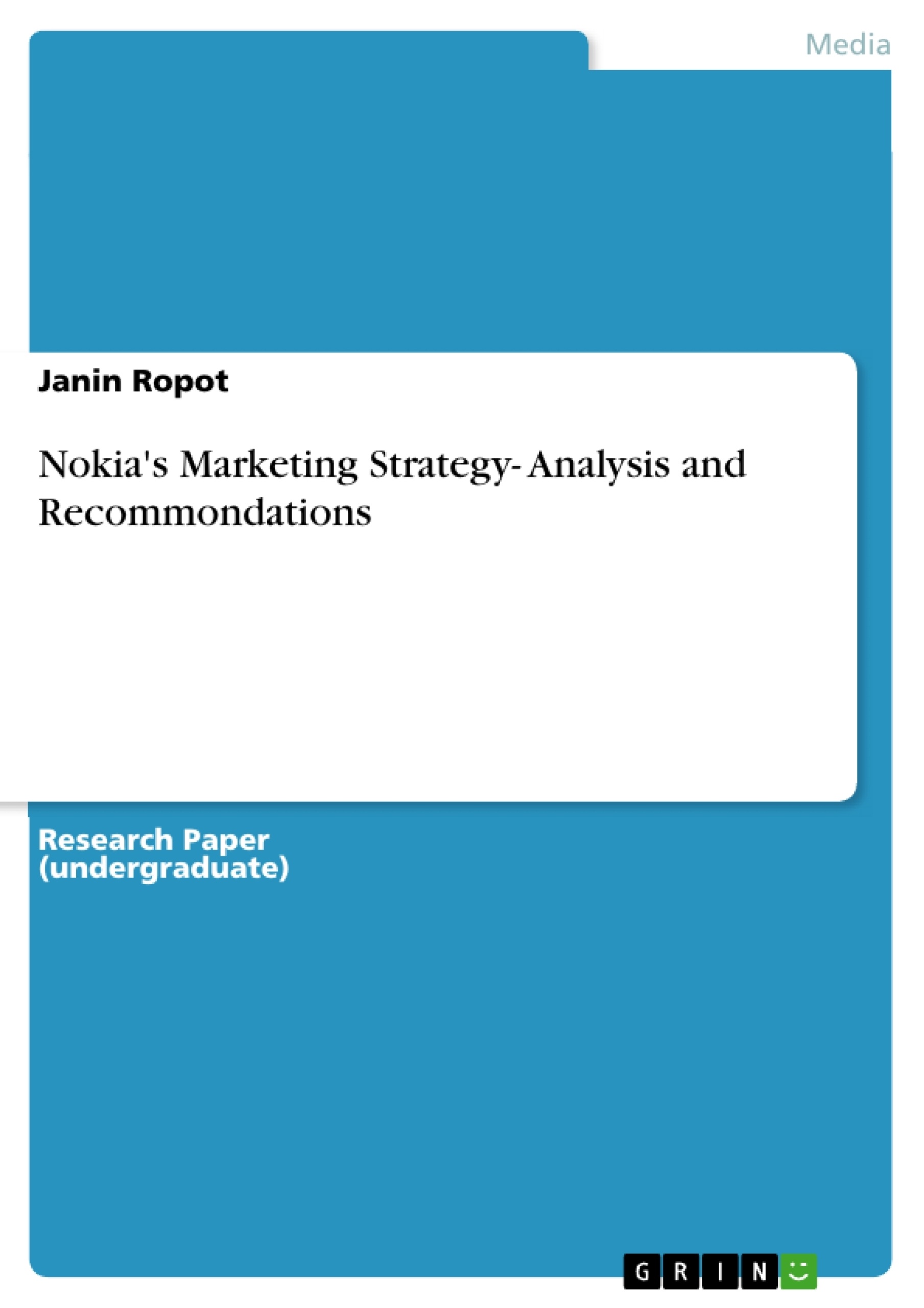This report is to provide a theoretical framework analysis of Nokia’s current marketing strategy amid the hypercompetitive smartphone segment on the German market. In order to analyse the external and internal influences, this report commences with the PESTLE and SWOT analyses and evaluates Nokia’s competitive advantages. It is going to provide an
in-depth description of a segmentation analysis, targeting and positioning strategies. In the second part of the report the reader will achieve understanding on Nokia’s chances to maintain their brand relevance to their target group. This is followed by recommendations on how to improve the current marketing situation and an overview of Nokia’s alternative strategic approach along with the resources and capabilities they require for increasing their market share, profitability and value creation. The main conclusions made in this report are to highlight the main range of products and the constantly altering product names, which is done to make products appeal more familiar to consumers. The second scenario suggests going a different way by inventing a control panel for household appliances. The research for the analysis comprises of a qualitative approach based on industry experts, internal documentation such as Nokia’s financial statements, market reports and public announcements relevant to the marketing strategy.
Table of Contents
1. INTRODUCTION
I. CurrentSituation
1. SITUATION ANALYSIS - CURRENT STRATEGIES
2. PESTLE- ANALYSIS
3. SWOT- ANALYSIS
4. SEGMENTATION, TARGETING AND POSITIONING
4.1 SEGMENTATION
4.2 TARGETING
4.3 POSITIONING
5. DIFFERENTIAL ADVANTAGE/ COMPETITIVE EDGE .
II.Recommendations
6. SMART
7. RECOMMENDED MARKETING STRATEGIES
8. CONCLUSION
REFERENCING LIST
APPENDIX
1. PESTLE ANALYSE
2. CONSUMER GROUPS NOKIA
3. CUSTOMER TARGETING - THREE STRATEGIES
4. SEGMENTATION ANALYSIS-NOKIA LUMIA & NOKIA E SERIES
5. NOKIA LUMIA 900- SAMSUNG GALAXY
6. IMPLEMENTATION SCHEDULE
7. MARKETING MIX – CONTROL PANEL
I I . I L L U S T R A T I O N I N D E X
FIGURE 1: SWOT- ANALYSIS NOKIA
FIGURE 2: THE THREE- STEP STP (HOLLENSEN 2010)
FIGURE 3: FOUR SEGMENTATION CATEGORYS OF NOKIA



